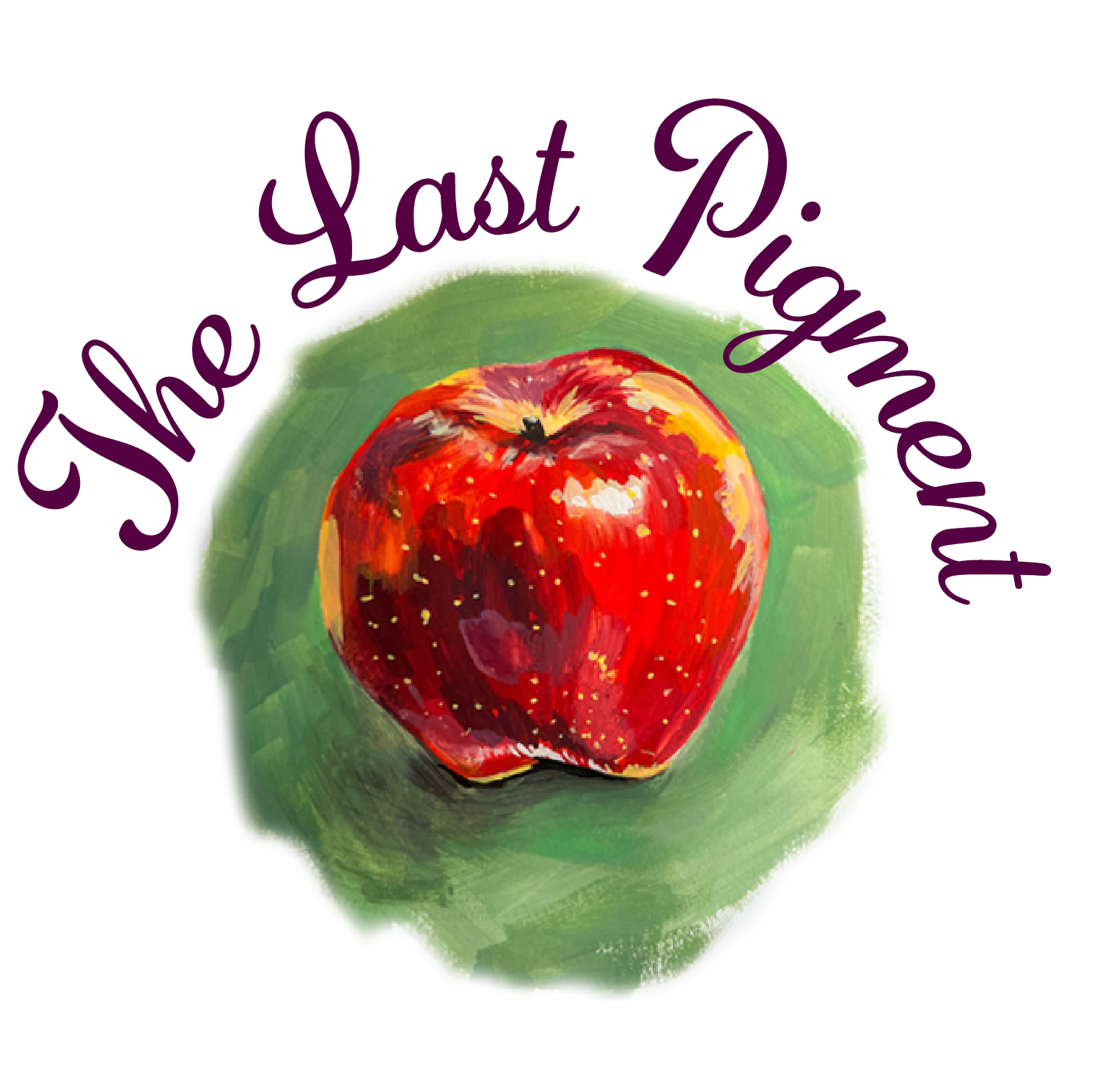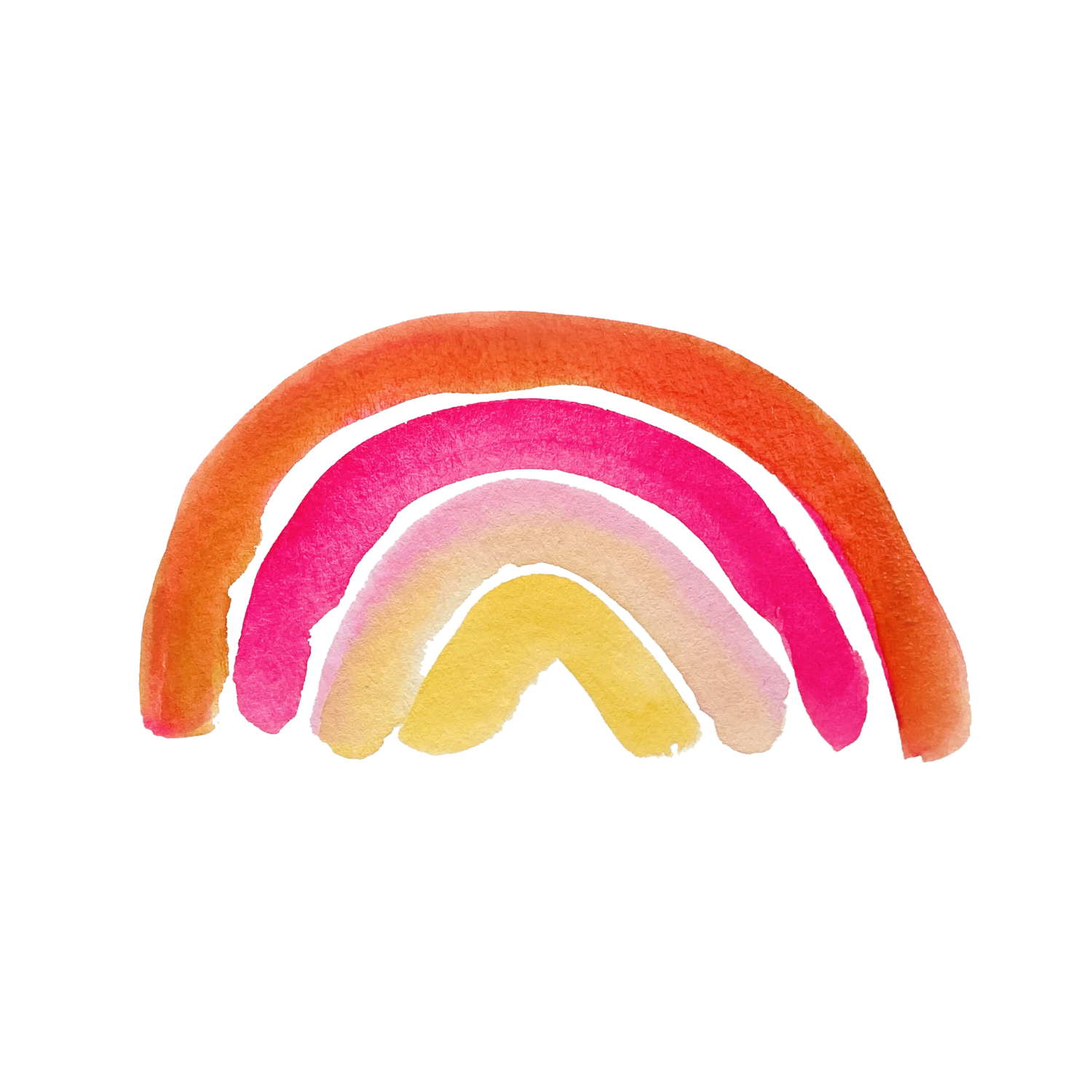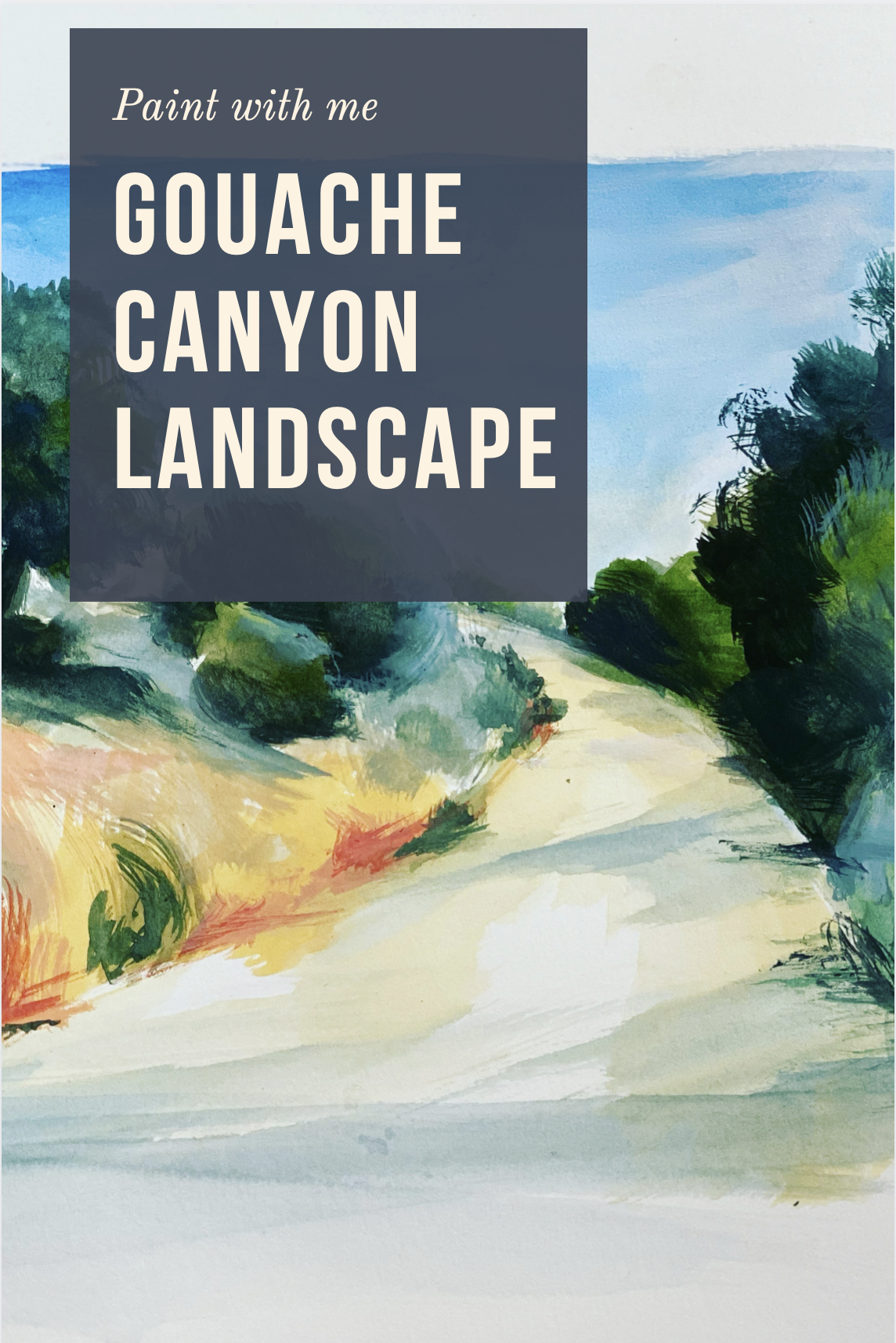Canyon Gouache Painting: Trails, Trees, and Blue Sky
Gouache for landscape painting gives you a fluid, water-based medium for creating loose compositions. I love using this medium for creating canyon, floral, and landscape pieces. It feels a lot like using oil paints because of the egg-like paint texture. The vibrant colors also provide you with an exciting pop of color without the multitude of layers involved in watercolor painting. Whenever I’m getting tired of building layers in watercolors, I’ll switch to gouache as a refreshing change. I can lay down color quickly and work through composition questions, switching gears with my art to strengthen other art skills.
I snapped the reference photo above on a jog. Connecting with nature really gives one a new perspective. I love working on landscapes when I’m not building up layers of color for botanical pieces that are going to take me hours to develop. Few people know that outside of art, I also love reading and writing. I have a background in English from my studies at university, specifically Victorian literature, and I am a published author. It doesn’t come up much in conversation any more, because I work in graphic design with clients. However, I wanted to mention it here, because I will be incorporating writing into the blog posts when relevant. This site will host painting resources for artists looking to learn, but I also want to inspire people to explore. You do not have to be just an artists, or just a writer, or just a designer. You can do anything that you want to do. In fact, doing more with your art will inform it, make your work deeper, and make you different from many of other other artists publishing today. Keep creating, keep exploring, and keep innovating.
Below is a creative writing piece inspired by the jog and the painting.
Sun scorched boulders break up a dried brush landscape. I’m chasing shadows of inspiration down the path. Pacing my breath as I step, I take in the smells of wood and the rattles of snakes placing marks in the dirt. Every step takes me closer to my next best idea. I think of Walden and Thoreau walking the path of his wooded home, theorizing the perfect civilization into existence. He’s walking from shadow to shadow with a cane. The wind pushes me forward. I emerge around the bend.
Jane Eyre across the golden bank under a tree. She’s standing with a bird on her hand and a long somber dress. Dreaming of Rochester, she smiles back at me. I imagine my favorite authors and artists happy along the trail in this natural space.
My mental hand brushes the thoughts away as I make my own marks on the path. The focus between breaths increases, before I take the giant, brave leap. To see is to know through reflection.
“I am the self which I will be; in the mode of not being it.”
The rattles in the brush quicken my pace. Undesired close encounters won’t happen today. The sky radiates cerulean. I fantasize about the bobcat crossing my path. My body stretches upward as my legs extend. The oppressive heat presses me back down with sweat dripping off my shoulders into the ground, the dirt from where I came. The golden brown brush and Naples yellow thistles bend away. I’m always chasing them. They’re always getting away.
No epiphanies today. Only the wind pushing me forward toward a new thought.
Joggers pass me on the path. Inorganic sounds of bikers wheels interrupt my jog. I redirect my steps dancing to nature’s vibrato. Her pitch reaches a forte at the bridge with the rushing of water and trees. I’m broken from introspection. She snatches the fragments of thoughts from my querulous fingers. She’s suddenly rushing with me. I trample the bridge towards the sun baked path ahead.
We’re thinking about being. We are.
My mind is suddenly overtaken by a shadow. I press my toes harder into the ground and stretch up toward the light. The sun gives freely, and I move forward.
- Andalee Hyatt
Right click the image to save it to your desktop.
Tutorial for the Gouache Landscape
I began with a base of naples yellow. You probably already know this color is a staple on my palette. I love how the saturation level of this color is lower than a lemon yellow, still warm, but provides a natural tone to your painting.
Naples yellow
Venetian red
Permanent alizaran crimson
Permanent white
Phthalo blue
Permanent Green
I began with mapping out the warm colors using my lightest color by studying the light source. I used the naples yellow to plan where the light hits the pathway, the bank, and then the trees.
Mixed the green color for the trees and foliage. I then studied the direction of the light in the picture and placed the lighter green color. I mixed the green with white to establish tonal values. Then I mixed a third green color and added blue for the darker parts of the trees.
Establishing shadow colors through observation. I mixed in a red color with the blue and green to find a good greyish purple color. I used this color for the shadows on the path.
Mapping out the sky through a light blue color. I mixed the color for the sky with blue and white placing it. Later in the piece I go back and lighten the horizon line to match the photo and I blend the areas where the light source is coming from. It creates a haziness in the sky that looks realistic.
Accentuating darker areas in the painting in order to establish tonal value. I achieved this through mixing the blue, red, and green without white. The last step in most of my paintings is to make sure I have tonal value. This step, achieved through a question, can easily be done by observing your darkest color and your lightest color. I lighten the horizon line ✓ and then I darken the shadows around the trees ✓ and accentuate the line of the path. I suggest at the end of every painting you revisit your tonal value to make final touches to the painting. I noticed that the trees needed lighter patches in order to show where the sun hit the tops of the trees and reinforce the direction of the light in the piece.
Gouache reactivates when you place layers over layers. The key to being successful with gouache painting is to think about how your colors will look when they are mixed together. If you know yellow and purple will make brown, then you know you’ll get a shadow on the pathway that is warm. Gouache can be a challenging medium to use, but it dries more vibrant than watercolors. It makes an excellent medium for landscape painting, and a preferred one for conceptual design for gaming.
If you liked this tutorial, please join us on the watercolor group on Gab, and subscribe to any of my channels. I’ll list these spaces below where you can access resources for learning and community.




